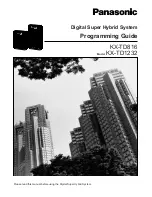
Technical Bulletin - Outdoor Humidity Sensor (P/N 203-5761) Installation Instructions
Part #: 026-4808 Revision 0 Date: 02/26/2003
COMPUTER PROCESS CONTROLS - http://www.cpcus.com/
Page 2
Wiring
NOTE: Do not clip or shorten the
wires leading from the sensor tube!
Shortening the wires will make
future sensor replacement difficult.
1.
Use Belden #8771 shielded
three-conductor cable or
equivalent.
2.
Connect the RED, BLACK,
and WHITE wires to the
RED, BLACK, and GREEN
wires from the sensor using
the wire nuts supplied in the
kit. Use the remaining wire
nuts to cap and insulate the
unused leads (BLUE,
ORANGE, and YELLOW). Clip the shield (BARE) wire.
3.
On the input board, connect the SHIELD and BLACK wires to the 0V terminal. Connect the WHITE wire to the SIG ter-
minal of the input board.
4.
Connect the RED wire to the +12V power terminal on the input board.
5.
Locate the input dip switch for the sensor point, and set to the OFF position (LEFT for MultiFlex, DOWN for 16AI).
Refer to the input board’s user manual for locations of the input dip switches.
Finishing the Installation
Once the outdoor humidity sensor is mounted and the sensor and board wiring is complete, check the gland
nut that secures the sensor tube assembly (inside the enclosure, as shown in
Figure 1)
and tighten if neces-
sary. Attach the cover plate (with the foam gasket included) to the sensor enclosure using the screws pro-
vided. Tighten all conduit connections, and cap all unused holes in the sensor enclosure using the caps
provided in the sensor kit. This will protect the wiring from moisture and the elements.
Calibration and Replacement
The sensing element of the 203-5761 duct-mount RH sensor is pre-calibrated and will require no physical
adjustment. If the sensor drifts over time, the sensor can be ‘recalibrated’ by replacing the pluggable sens-
ing element. Contact CPC to order replacement elements (P/N 203-5795).
To replace a sensor element,
pull the sensor’s power connection from the input board.
Remove the
cover plate of the enclosure. From inside the enclosure, loosen the gland nut that secures the sensor tube,
and press the sensor tube down until it hangs by the wires. Unscrew the slotted cover of the sensor tube to
expose the pluggable RH sensor element.
Note the orientation of the sensor element before unplugging it
and plug the new sensor element in
using the same orientation (a pair of needle-nosed pliers might be necessary if it is difficult to line the sen-
sor up with the pins). Replace the slotted cover when finished, and push up on the sensor element cap until
it no longer sticks out through the bottom of the end of the tube. Tighten the gland nut and replace the
cover. There is no other calibration method needed, and no adjustments are present in the unit.
Note: Do not expose sensor element to the fumes of curing RTV silicone rubber. Doing so
will damage the calibration of the element.
Figure 2 - Sensor and Input Board Wiring




















